Inspiration and Design
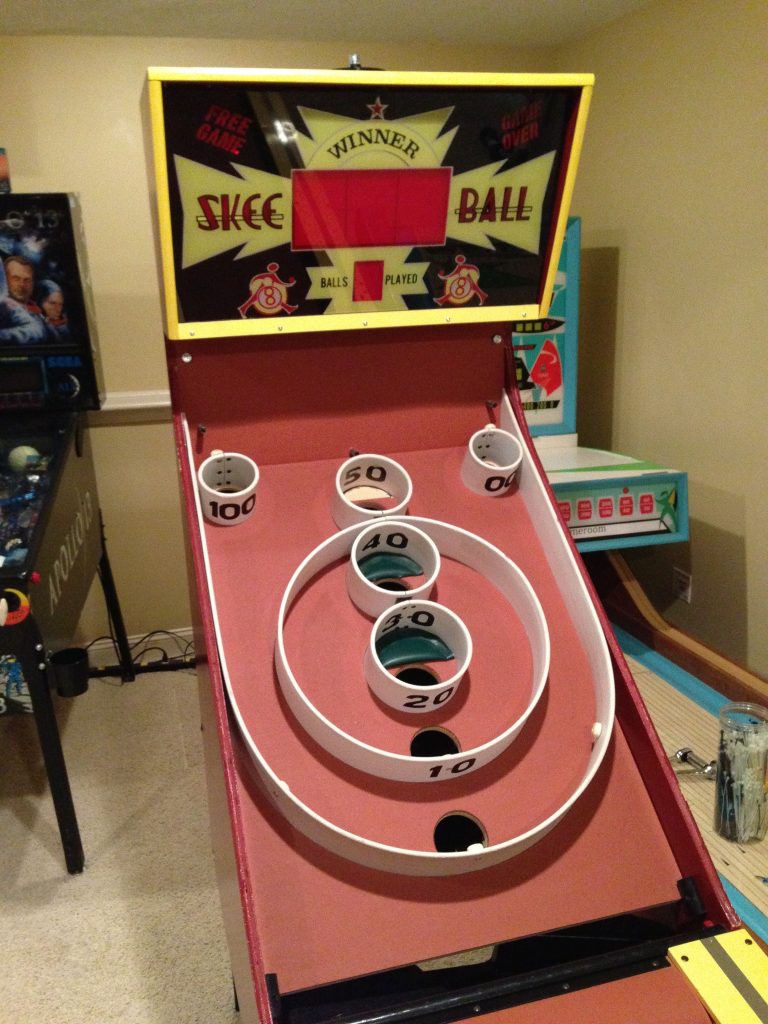
When the class was first covering the concept of bagatelle, I noted a lot of emphasis on luck and skill. That was the primary reason I decided to base my Pinbox bagatelle design on Skee-Ball; it’s a familiar test of consistency with a bit of luck involved.
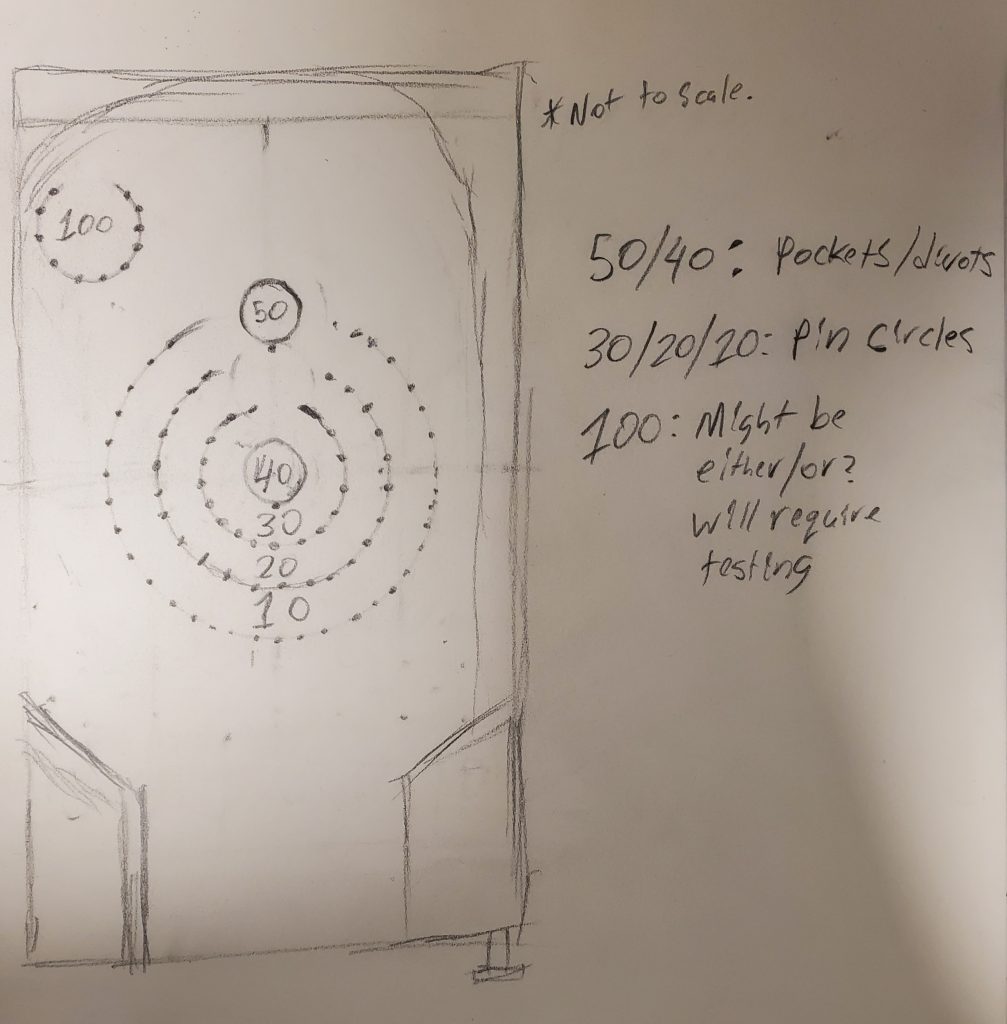
My initial idea was to essentially fully adapt a board to be like that of a Skee-Ball table; Have the same form of grouped scoring areas and have people shoot 9 balls, but adjust the scoring regions to follow how bagatelle balls are launched (i.e. up and around from the side rather than just straight below in your typical skee-ball machine).
A few problems arose as I tried to do this:
- There would be no holes in which the balls would fall into and return to the player.
- The smaller scoring regions (50, 100) would only fit one ball at most, given my initial size drafts.
- Following a Skee-Ball layout 1:1 (i.e. having the 100 region off to the side) resulted in being able to score 100s into a trivial task of just launching with as much force as possible.
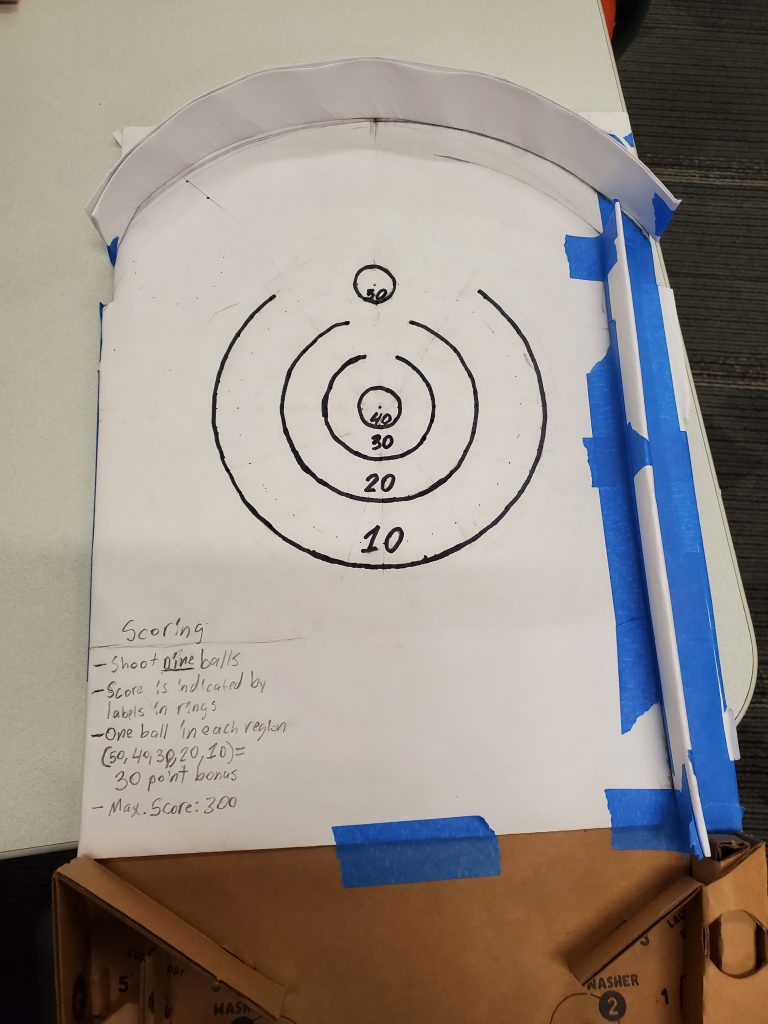
Revisions
These were the things I did in order to fix my initial tests:
- Remove the 100 scoring region entirely.
- Since this resulted in a LOT of overshooting, I added some pins at the end of the launcher’s trajectory to allow scoring to be a bit more consistent.
- Provide a point bonus to compensate for being unable to fill other regions. If you managed to get a ball in every scoring region, you would get an extra 30 points.
- I did this so that if you get one ball in every region, then scored 30 for the rest, you would get a total of 300 points. This is the exact same as scoring one ball in the 50 and 40 regions and then scoring 30 in the rest.
- It was designed to emphasize that test of luck, skill, or consistency.
- If you want to be technical, this mechanic makes it more like Fascination, but since this mechanic is optional, I’m still insisting on calling it Skee-Ball.
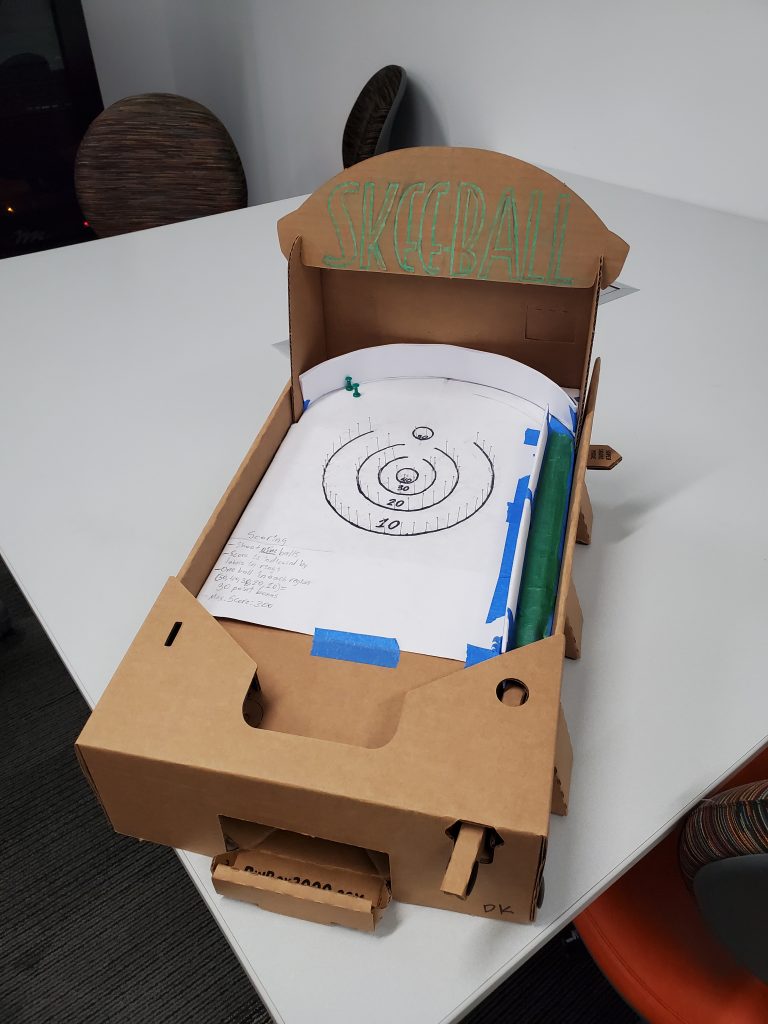
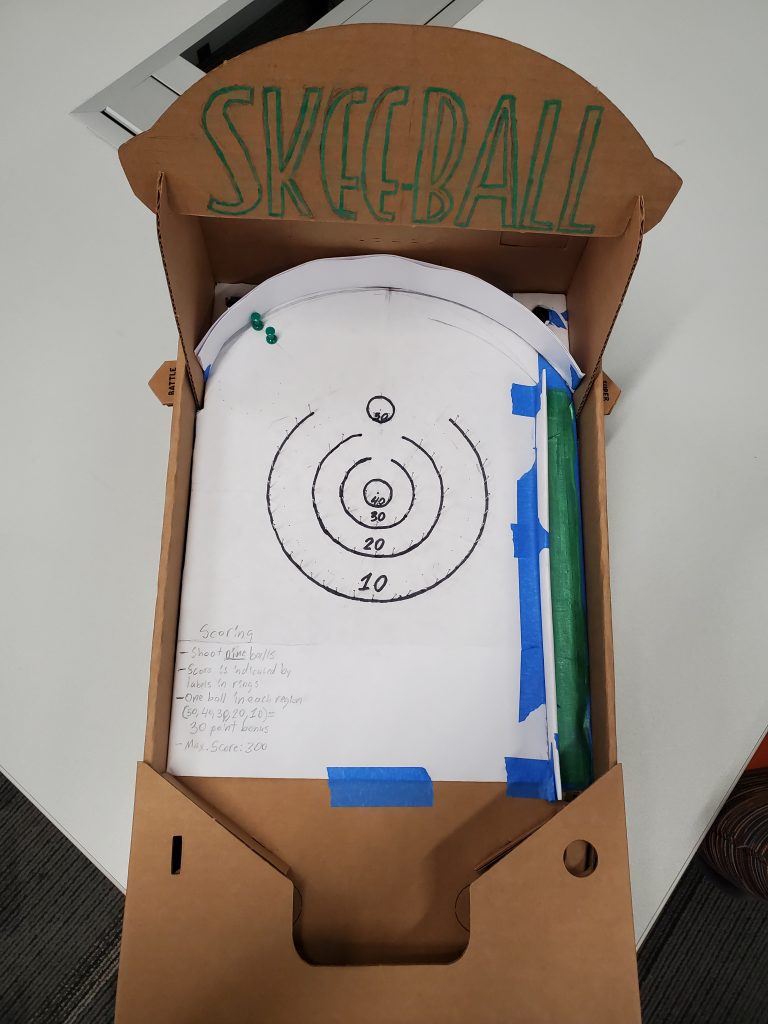
Feedback and Postmortem
Playtesting feedback went about as well as I had anticipated; the main points of criticism came from how scoring was designed (more specifically, its wording) and its overall visual presentation (or lack thereof.)
Turns out the 30 point bonus I tried to implement was worded a bit too ambiguously; I should’ve stated that at least one ball in each region would’ve provided the bonus.
Additionally, the lack of eye-catching visuals was just entirely an issue on my part. I could’ve definitely refined how the game looked, but with how I drafted the initial project, I backed myself into a wall and couldn’t give the game the visual flourish it desperately needed.
One thing I should’ve anticipated was people having issues with having all 9 balls. Between play sessions, balls would get stuck in the return chute; this resulted in people not knowing that all 9 balls were actually there, and as a result I had a lot of feedback regarding that. It sucked, because I had thought I dealt with this problem while testing it on my own, but it seems it still persisted despite my best efforts.
Another piece of feedback was that it seemed a bit too easy; the balls bouncing off the pins at the end of the trajectory made things too consistent for some people. To an extent I understand this point, but I also choose to believe that the person who said this just managed to master the game better than I did, since I don’t think I could keep things that consistent throughout my numerous tests while prototyping.
If I went back and revised things, what I would focus on would be the following:
- Visual polish, obviously. The game was very visually basic and on a paper white background.
- I’d try to make the colors more akin to a real Skee-Ball machine, but I’d first need to find a consistent color scheme for it, because even the official machines seem to lack that.
- I’d also like to make the marquee a bit better. I don’t think I did a bad job at emulating the Skee-Ball typeface when making the one I currently have, but it just lacked color.
- Using holes for the scoring regions. This would eliminate the need for 9 balls and also make it so scoring in the same region multiple times was possible.
- Trying to actually implement a 100 point scoring region. The game’s score is woefully small because of the limitations of the current board, and the game didn’t feel quite right without the high-risk, high-reward that the 100 hole provides. I’d have to spend a lot more time in prototyping to figure out where it would work best.
